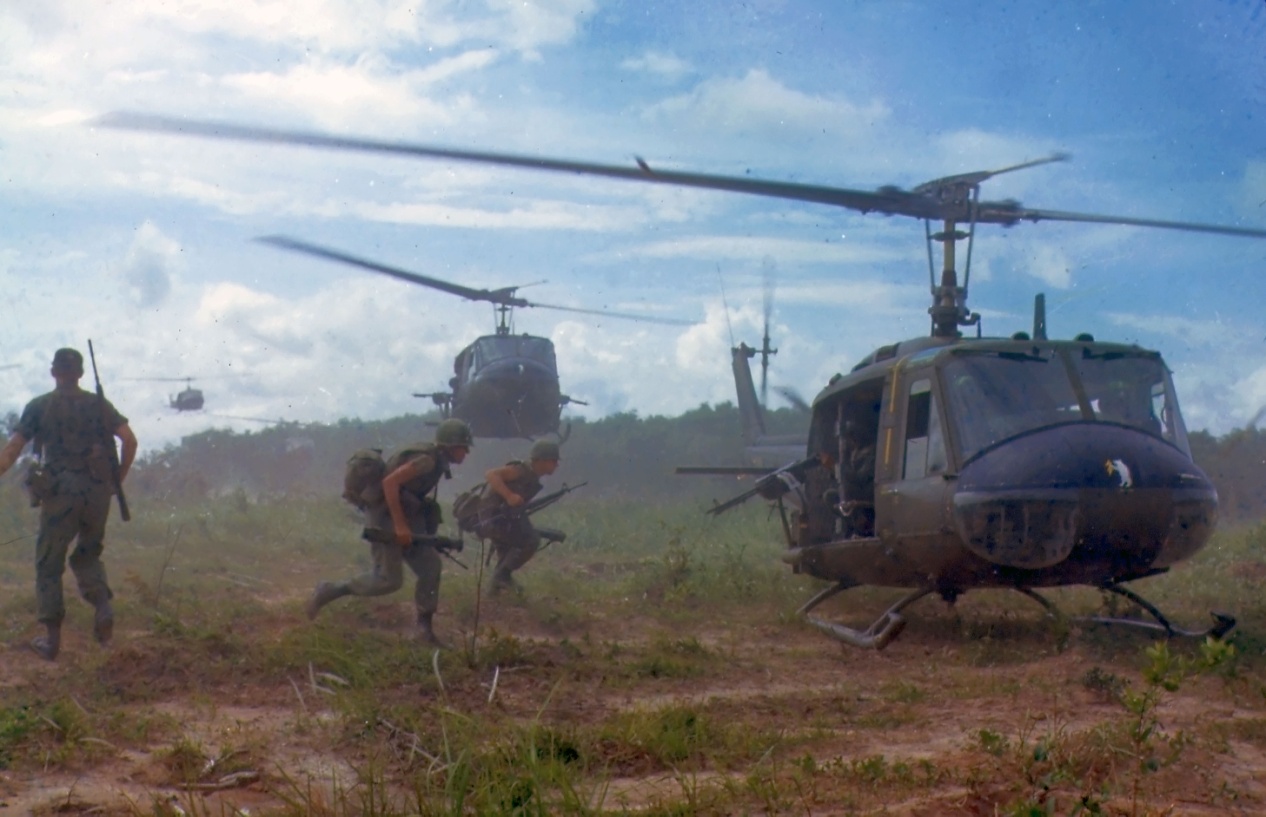Huey 705’s (Unplanned) Last Day in Vietnam
November 21, 2013Posted on November 21, 2013
By Ray Panko | [email protected] | Pearl Harbor Aviation Museum
Pearl Harbor Aviation Museum’s UH-1H Huey
Pearl Harbor Aviation Museum’s UH-1H Huey (S/N 69-15705) is one of our Vietnam War veteran aircraft. She led a charmed life until her last day there. It had not been planned to be her last day. But then in Vietnam, few things went as planned.
Built in September 1970, she was serving in Vietnam by November. The “705” spent most of her time in the 229thAviation Assault Battalion of the famous 1st Cavalry Division (Airmobile). The “Air Cav” was the first Army division built around the mobility of helicopters. The division had two aviation assault battalions. Each had about sixty troop-carrying helicopters organized into three companies. Each also had a fourth company of helicopter gunships that protected the assault helicopters entering and leaving landing zones. Our helicopter spent most of her time in B Company.

Figure 1: Large Assault
Our helicopter is an H model, which was the last model of the “big Hueys” developed during the war. Compared to the earlier D model, she had a stronger engine and self-sealing fuel tanks. She was not fireproof, but the fuel tanks were on the bottom of the helicopter and tended to rupture on hard landings. The improved fuel tanks reduced that danger.
In an assault, each UH-1D or UH-1H Huey typically carried five or six heavily armed troops. This meant that single assault battalion could deliver 300 or more troops at a time.However, it would still take several assault landings to deliver a battalion of troops, more landings to resupply them, and more to retrieve them after the battles. Each time a Huey arrived at a landing zone, it was likely to be under fire. When it was stationary, it was a sitting duck. Typically, an assault helicopter merely came to a hover, so that it would not get stuck in mud or to deliver troops in rough terrain. Troops then had to jump out.

Figure 2: Jumping Out of a Huey
Assault Hueys were called “slicks,” because they lacked the external guns and rockets of helicopter gunships. But they were not completely unarmed. They had a door gunner on each side. The door gunners would lay down suppression fire during the approach and retreat. Sixty Huey side gunners could lay down heavy fire. Even so, assault landings were always perilous.


Figure 3: Side Door Gunners on a Huey “Slick”
In addition to the two door gunners, one of whom was the helicopter’s crew chief, the Huey had an aircraft commander (main pilot), who usually sat in the right seat, and a pilot (co-pilot). Most pilots became aircraft commanders later in their tours. The two pilots typically were warrant officers or lieutenants. Each platoon of ten aircraft crews was led by a captain, and the company commander was a major. The battalion commander was a lieutenant colonel.
We know almost nothing about the 705 in Vietnam, but we do know how its time there ended. Landing zones were often very small and surrounded by high trees. On the day after Christmas in 1971, the aircraft was rapidly approaching the second landing zone of the mission. Just before landing, the blades struck tree limbs, and the aircraft had a high-side governor failure.
The governor kept the blades from spinning to fast. If the governor failed on the high side, the blades could spin faster until they literally broke and tore the cabin apart. The pilot did the only thing he could do. He pulled back on the collective to increase blade pitch. Putting more stress on the blades kept them from overspeeding. Of course increasing the pitch also causes the aircraft to rise very rapidly. At some point, the overspeeding problem was overcome, but by then the helicopter was very high and needed to land safely. The aircraft limped back to its base at Thien Ngon. When the pilot got there, he turned off the motor and took all pitch off the blades. With no pitch, the blades continued to spin. The helicopter entered autorotation and begin to lose altitude very rapidly. At the last second, the pilot pulled up pitch, giving a brief moment of lift that slowed the descent enough to land safely. No injuries were reported, but the bird was sent back to the States for repair. She spent most of her remaining Army service time with the 1st Air Cavalry at Fort Hood.
At some point, the 705 decided to retire in Hawaii, where she enjoyed flying with the Hawaii Army National Guard. We are now working to find out more about her life here. We do know that one of the bus drivers who bring people to the museum was with our Huey in the Hawaii Army National Guard.






